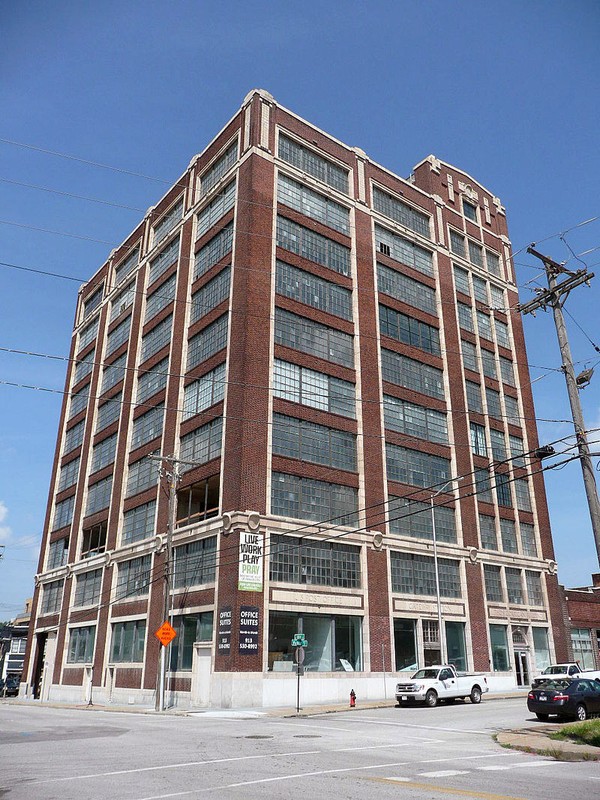Thomas Corrigan Building (Corrigan Station)
Introduction
Author-Uploaded Audio
00:00 / 00:00
Early history of the Corrigan family and this building by Dr. William Worley recorded for Clio
Text-to-speech Audio
Named in honor of the 19th-century businessman who built a streetcar empire in Kansas City, the Thomas Corrigan Building is a ten-story reinforced concrete structure designed by architects Keene & Simpson to support a variety of industrial needs from office space to manufacturing to warehousing. The building was completed in 1921 as an investment of the four daughters of Corrigan and the building stayed in the Corrigan family until 1977 when it was purchased by Alan J. Bronfman. Over the last century, the structure has been used by many influential KC businesses. From 1921 to 1931, the primary occupant was the Gateway Station Post Office while the Donnelly Garment Company was the main occupant from 1935 to 1947 followed by the Veterans Administration until 1958. After an initial plan to convert the building to apartments, the structure was acquired by a new ownership group in 2015 and renovated to support retail on the first floor and office space on the remaining nine stories. This development, known as Corrigan Station, was shaped by the creation of the Kansas City Streetcar Line, perhaps fitting owing to the building's connection to streetcar magnate Thomas Corrigan.
Images
The building was home to the Gateway Station Post Office followed by the Donnelly Garment Company

Backstory and Context
Text-to-speech Audio
Thomas Corrigan arrived in Kansas City in 1868 and immediately set to work establishing basic infrastructure projects with his brothers, from carving out streets from the high river bluffs that now form the downtown area to mule-drawn streetcars in the 1870s. By the end of that decade, Bernard Corrigan had become the police commissioner and established what some consider Kansas City's first political machine with strong ties to leading banks and a near-monopoly on the streetcar business.
Bernard Corrigan and his brothers likely overplayed their hand, however, when they pushed the city council to accept a 30-year deal that would effectively block competition by barring new streetcar companies. With publisher William Rockhill Nelson leading the fight against the monopoly, and with many leading businesses eager for new investment that could lead to cable cars, the mayor vetoed the proposal. With the support of other city leaders, the Metropolitan Street Railway invested in cable cars and Thomas Corrigan shifted his investments from streetcars to real estate. Bernard Corrigan remained a central figure in Kansas City and became president of the Metropolitan Street Railway in 1902.
From 1935 to 1947, the primary tenant in this building was the Donnelly Garment Company was led by entrepreneur Nell Donnely Reed who was known for her business acumen, innovation in fashion design, opposition to unionization, and personal life that included a high-profile kidnapping and second marriage to a U.S. Senator. Donnely's form-flattering designs and business model which produced more affordable ready-wear clothing led to her business becoming one of the largest domestic clothing manufacturers at mid-century.
Cite This Entry
Admin, Clio. "Thomas Corrigan Building (Corrigan Station)." Clio: Your Guide to History. August 25, 2024. Accessed April 6, 2025. https://theclio.com/tour/2305/10
Sources
Larry K. Hancks, Nomination form for the National Register of Historic Places for the Corrigan Building, Department of the Interior- National Park Service, October 19, 1981. Accessed August 28th, 2022. https://mostateparks.com/sites/mostateparks/files/Corrigan%2C%20Thomas%2C%20Bldg.pdf
Coleman, Daniel. "Biography of Bernard Corrigan, Railroad Magnate," Missouri Valley Special Collections, 2008.
Roberts, Rob. Historic Corrigan Building will get new life — but not as apartments, Kansas City Business Journal. January 16th, 2015. Accessed August 28th, 2022. https://www.bizjournals.com/kansascity/news/2015/01/16/historiccorrigan-building-will-get-new-life-but.html.
Roe, Jason. Wrong Way Corrigan, Kansas City Public Library. Accessed August 28th, 2022. https://kchistory.org/week-kansas-city-history/wrong-way-corrigan.
https://en.wikipedia.org/wiki/National_Register_of_Historic_Places_listings_in_Jackson_County%2C_Missouri%3A_Downtown_Kansas_City#/media/File:Thomas_Corrigan_Building.jpg

